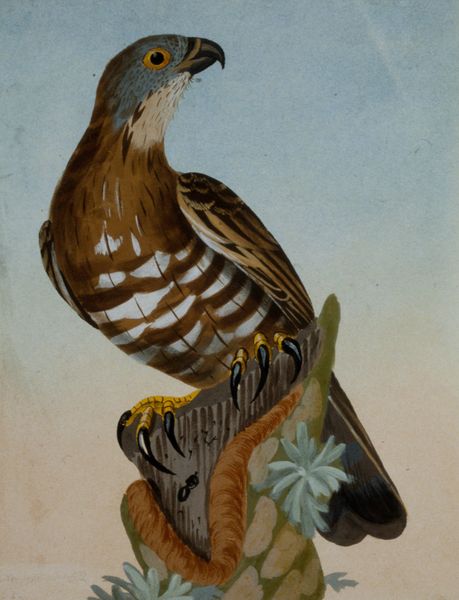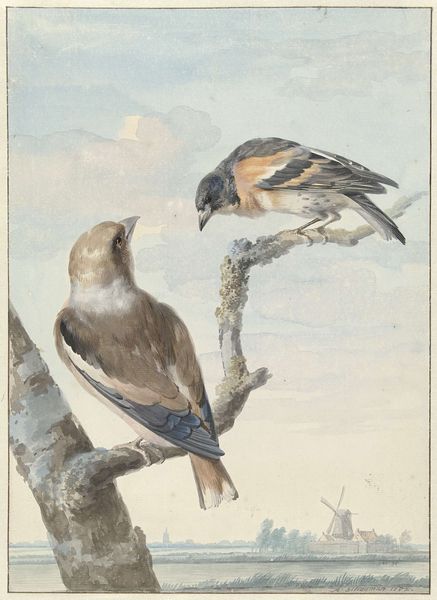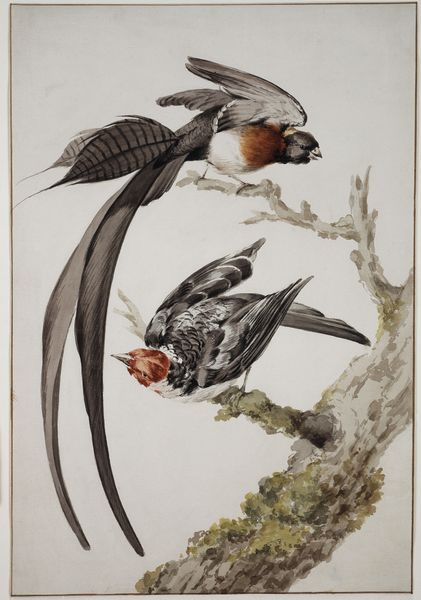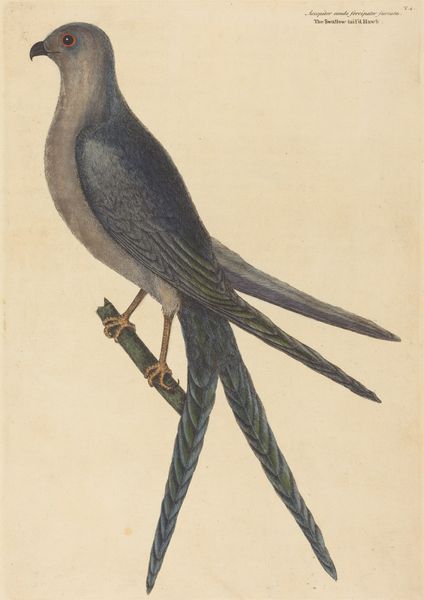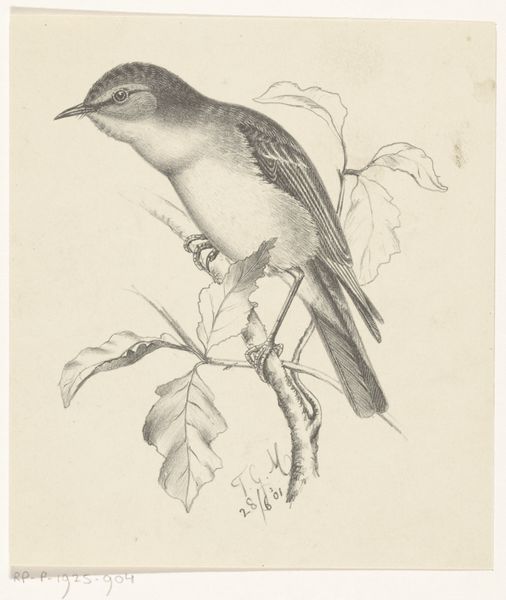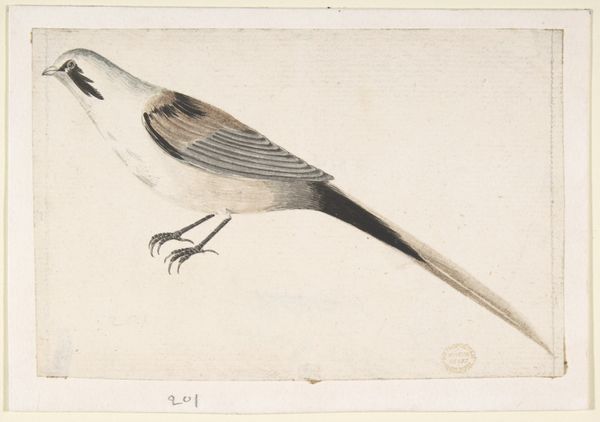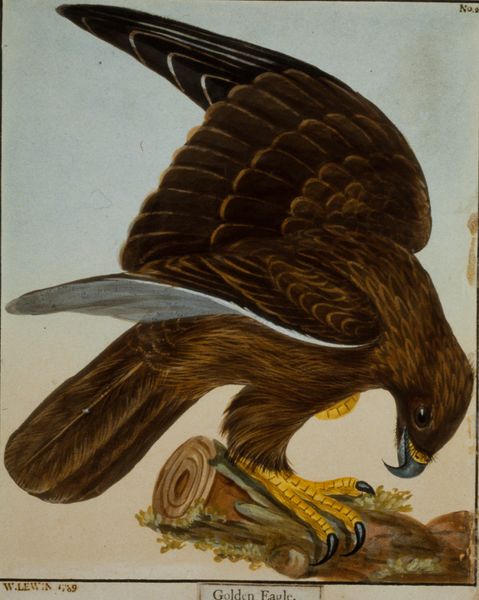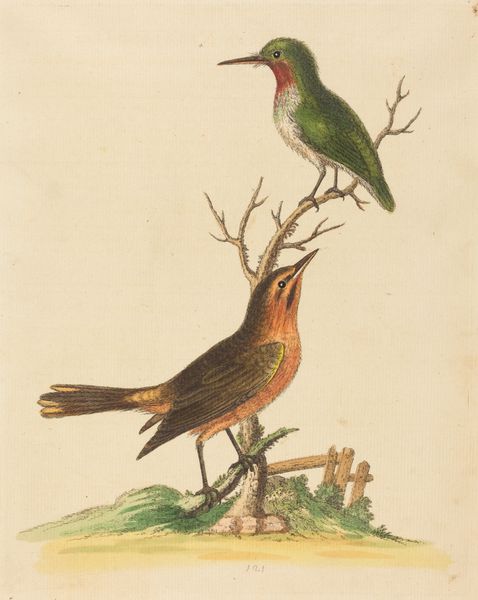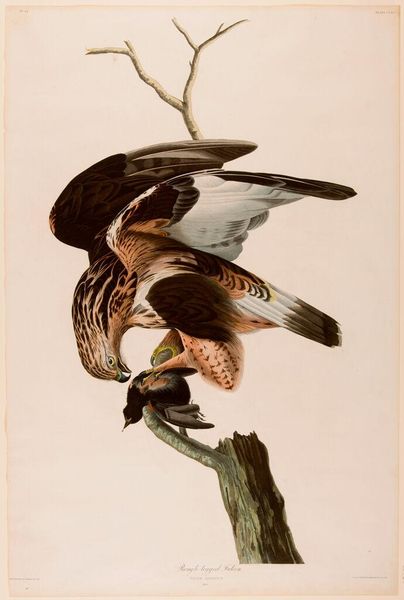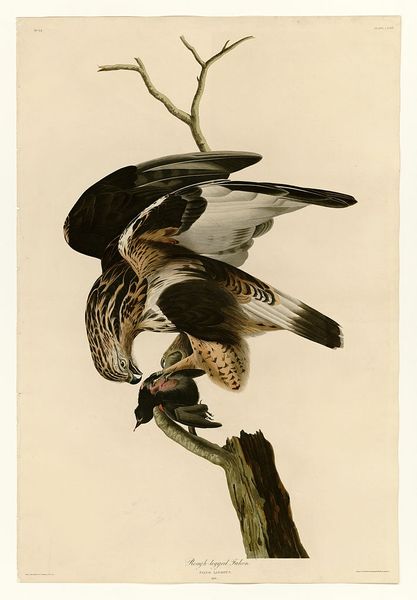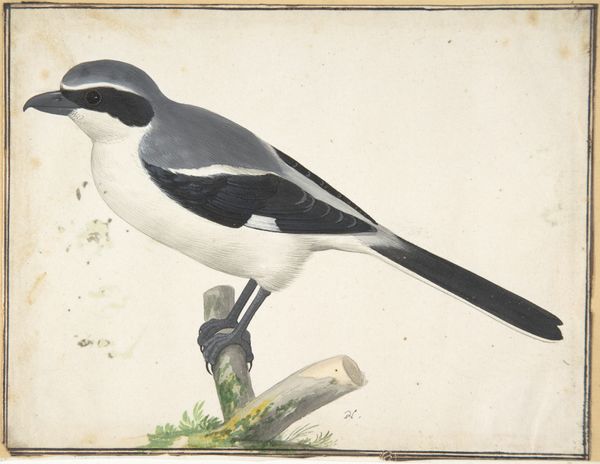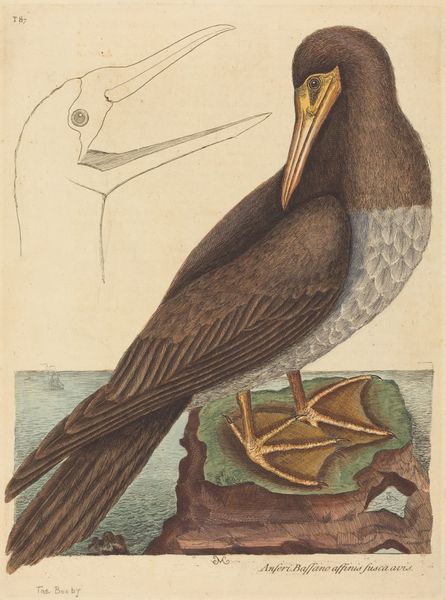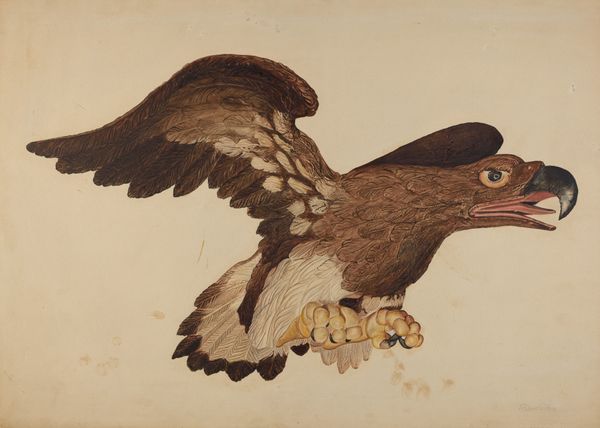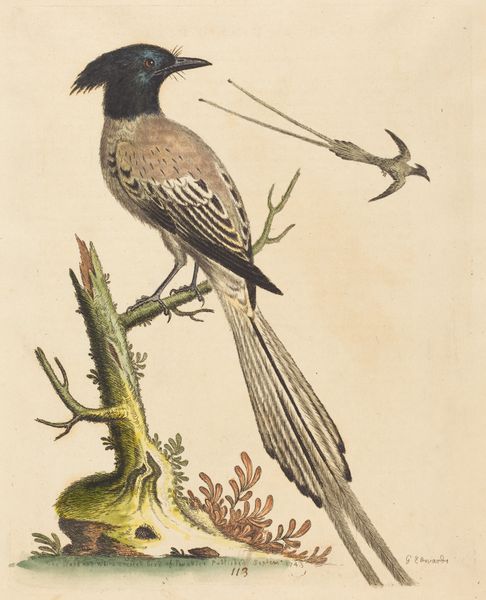
drawing, plein-air, watercolor
#
drawing
#
plein-air
#
watercolor
#
england
#
romanticism
#
watercolour illustration
#
history-painting
#
academic-art
Dimensions: 9 9/16 x 7 5/8 in. (24.29 x 19.37 cm) (sheet)
Copyright: Public Domain
Editor: This is William Lewin's "Wood Chat" from 1789, done in watercolor, and currently at the Minneapolis Institute of Art. I’m struck by the detail—it's so precise. What can you tell me about the making of a piece like this? Curator: Well, let's consider the social context first. This was made during a time of intense colonial expansion. Scientific illustration served the purpose of documenting and claiming the natural world. Editor: So, even a seemingly straightforward image of a bird is tied to larger economic forces? Curator: Precisely! The act of Lewin making this work – the sourcing of the pigments, the paper, even his labor as a skilled artist – speaks to a complex web of production and consumption that tied Britain to its colonies and to natural resources all around the world. How do you think the labor connects with artistic value? Editor: I hadn't thought of that, that the labor going into the image influences our perception of its quality. So, someone might see the scientific accuracy stemming not just from close observation but from countless hours of work. Curator: Exactly. And it's important to remember this wasn’t just a detached observation. The scientific impulse had implications for trade and agriculture and power, both local and global. Considering materiality lets us unpack these narratives. Editor: So by looking at the watercolor, we're actually looking at something that's part of that story, as it is part of the means to the construction of this world. Thanks, I’m thinking about it in a different way now! Curator: That’s what happens when you follow the materials!
Comments
No comments
Be the first to comment and join the conversation on the ultimate creative platform.
